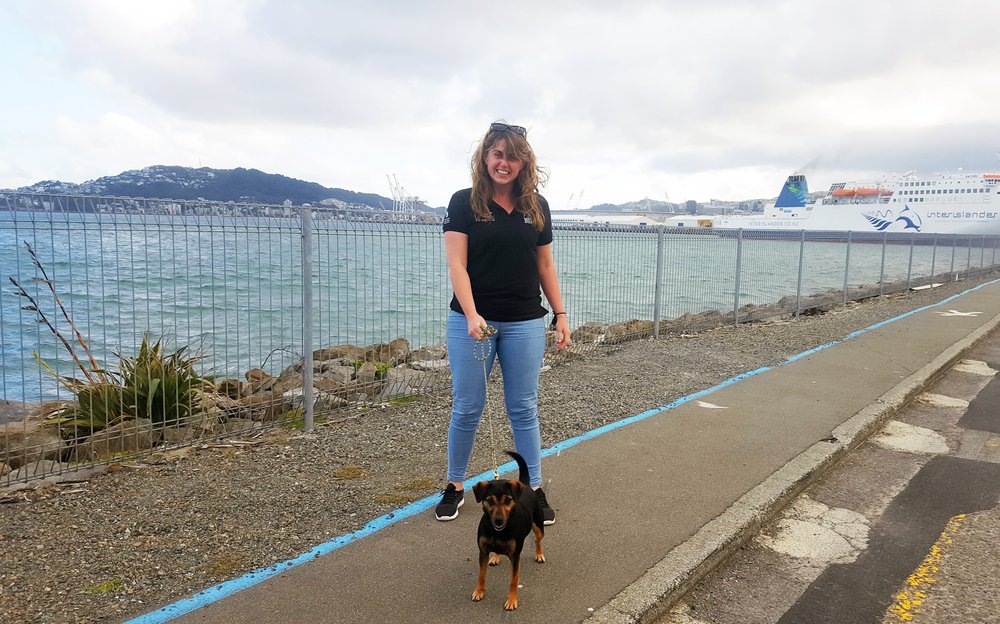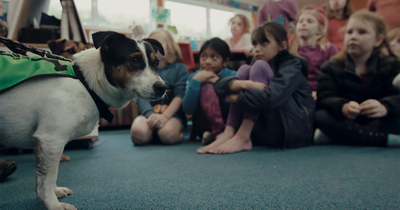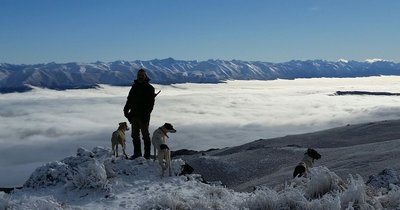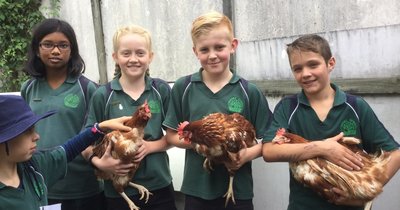Working dogs in New Zealand are trained to assist with specific tasks that arise, particularly in the biosecurity, conservation, and agricultural sectors. We spoke to Hannah Johnston, one of the Department of Conservation’s newest dog handlers, about the great work these helpful canines do every day.
You (always) got a friend in me
The working relationship between humans and dogs stretches far back into history. Herding dogs date as far back as the 16th century but before that, dogs were used to help protect herds from predators. In fact, ancient sculptures and tablets indicate that dogs have assisted humans in hunting and herding animals around the world for thousands of years. Although a common sight across rural New Zealand, herding dogs are not the only dogs doing great work in our backyard.
From hearing dogs and search and rescue dogs, to police dogs and conservation dogs, we can rely on man’s best friend when we need to get the job done.
And while each role has specific needs, all working dogs need to demonstrate obedience and a real willingness to work. As a former dog handler for Ministry of Primary Industries (MPI), and now a DOC dog handler, Hannah knows what it takes to form a great partnership with her furry colleagues.
From plants and food….
As a biosecurity dog handler, Hannah trained dogs to find fruit, plant material, and meat as part of MPI’S strict border control measures at airports. Hannah and her Golden Labrador, Honey, would sniff and search people and luggage as they entered the country (well, only Honey did the sniffing!). How did Hannah get into this line of work?
“I studied ecology and environmental science at university. Then I saw that MPI were looking for dog handlers and I thought, well that’s just perfect. That’s how I got into MPI: a combination of some dog handling experience, and my degree.”
Honey was very easy to work with, but being a biosecurity dog, Honey and Hannah’s relationship was mostly a professional one. “(Biosecurity work) is very clinical work, because food is everywhere, the dogs have their own kennel facilities. You have to avoid desensitisation, which is why they’re kept quarantined in a way.” On a normal working day, Hannah would pick Honey up from the kennels in the morning, work with her during the day, then drop her back at the kennels in the evening. At MPI, Hannah worked mostly with Beagles and Labradors; passive breeds that are well suited to working amongst throngs of people and excellent at finding their target material. Working at the airport was a “magical experience” for Hannah – “it’s a wonderful place, a melting pot of so many people” she says. Her most memorable find during her three years at MPI? A suitcase full of pig trotters. “The visual will haunt me for the rest of my life! But Honey was quite excited.”
…..to rats and mice!
Hannah joined DOC in 2017 and was paired up with Indie, a Fox Terrier crossed with a Jack Russell. When they met for the first time, Indie was 1 ½ years old and had already received basic training. “It was up to me to get to know her,” says Hannah. Indie is now two years old, and since they became fully certified to detect rodents, they’ve become an inseparable pair. “It’s been quite a change for me to live with her, but this way it’s easier to build more of a bond,” says Hannah. “Daytime is work, and at night we play and go for a nice walk, which helps form that bond you need when you have to read your dog and see how they react in a situation.”
And what does it take to be a conservation dog?
“Our dogs have to be adaptable to anything. We do our work on unsteady rocky boats, dense forests, steep coast lines, classrooms full of children, and wharves; there’s such a variety of environments that we work in.”
Like people, some dogs are more adaptable than others. She says that during training, handlers know quickly if a dog can cope with the changeable environments. “Sometimes it’s a breed thing. Terriers (like Indie) are known to be go-getters, and quite fearless.”
Hannah says that Indie loves working. Often when they’re on a leisurely walk, Indie will catch a scent and want to follow it. “(Terriers) love chasing rats and mice. It’s in their breed to do that. She’d work all the time if she had her way.” Indie only started locating rats a little while ago, Hannah explains. “The first time she found a rat after her training, it was a real confidence boost for her.
She gets so fired up about going to work, knowing that she’s going to be rewarded for her efforts. It’s nice to work with a dog that enjoys doing its job.”
Indie might love the rats, but Hannah is still getting used to them!
The underdogs of dog work
Hannah believes that conservation dogs are vitally important to protecting our natural environment. “They help us to carry out a job that is beyond what we could do ourselves. Police and customs dogs are trained to detect illegal substances, and guide dogs are trained to do tasks for the blind so they can live actively. Biosecurity dogs are trained to find materials that could carry diseases and affect the economy, and conservation dogs have a hugely important job protecting our native wildlife.” Hannah adds that many of New Zealand’s birds are endemic, which means they can’t be found anywhere else in the world.
“Once they’re gone, they’re gone. And it’s hard to put a value on how important protecting them is.”
As for the partnership between Kiwibank and DOC, Hannah says that only good things can come from it. “I think it’s a really good partnership in that, with Kiwibank’s support, the work of the Conservation Dogs Programme is opened up to a whole new audience. It’s a great partnership and I’m so thankful for the funding. I really do prefer chasing after rats instead of apples and oranges. Working with Indie really feels like this is my lotto of life that I’ve won.”
The Conservation Dogs and their talented handlers are active all over New Zealand. You might be lucky enough to meet them at wharves, ferry terminals, island and mainland sanctuaries, in the national parks or perhaps even at your local Kiwibank branch so keep an eye out when you're exploring our backyard! A huge thanks to Andrew for sharing his great photos.
Want to find out more? Stay up to date with the programme by visiting the Dog Programme section on DOC's website or check out Kiwibank’s social media channels.



